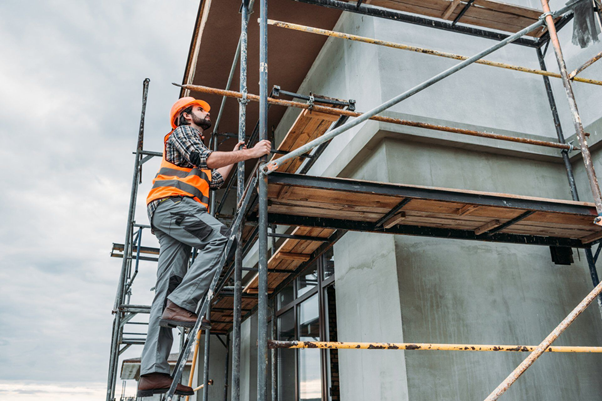How Scaffolding Design Impacts Project Efficiency and Worker Safety
Scaffolding is a critical component in the construction industry, serving as the backbone of many building projects. Its design and implementation can significantly influence both project efficiency and worker safety. This article explores the impact of scaffolding design on these two crucial aspects, highlighting best practices and considerations for optimizing scaffolding systems.
The Role of Scaffolding in Construction
Scaffolding provides a temporary structure that supports workers and materials during the construction, maintenance, or repair of buildings and other structures. It facilitates access to high and hard-to-reach areas, ensuring that work can be carried out efficiently and safely. Effective scaffolding design is essential for maximizing productivity and minimizing risks associated with construction activities.
Impact of Scaffolding Design on Project Efficiency
- Streamlined Workflow
An efficiently designed scaffolding system can streamline workflow by providing workers with easy access to their tasks. Well-organized scaffolding allows for the smooth movement of tools, materials, and personnel, reducing downtime and interruptions. For instance, modular scaffolding systems, which are pre-fabricated and easily assembled, can significantly speed up the setup and dismantling processes, contributing to overall project efficiency. - Reduced Labor Costs
Proper scaffolding design can lead to reduced labor costs by minimizing the time required for construction and maintenance tasks. When scaffolding is designed to provide optimal access to work areas, workers can complete tasks more quickly and with fewer adjustments. Additionally, efficient scaffolding reduces the need for frequent repositioning or modification, further cutting down on labor costs and project delays. - Enhanced Material Handling
Scaffolding systems that incorporate platforms and storage areas can enhance material handling efficiency. By providing designated spaces for storing materials and tools, scaffolding reduces the need for workers to frequently ascend and descend, which can be time-consuming and physically demanding. This design consideration helps maintain a steady workflow and improves overall project efficiency.
Impact of Scaffolding Design on Worker Safety
- Structural Integrity and Stability
One of the primary concerns in scaffolding design is ensuring structural integrity and stability. Scaffolding must be designed to support the loads it will bear, including workers, tools, and materials. Proper design, including the use of high-quality materials and adherence to load-bearing standards, helps prevent accidents such as collapses or falls. Regular inspections and maintenance of scaffolding also play a crucial role in maintaining safety. - Safety Features and Compliance
Effective scaffolding design incorporates safety features such as guardrails, toe boards, and non-slip platforms to protect workers from falls and other accidents. Compliance with safety regulations and standards, such as those set by OSHA (Occupational Safety and Health Administration) or other relevant bodies, is essential. Scaffolding should be designed and erected in accordance with these standards to ensure that it provides a safe working environment. - Training and Accessibility
Scaffolding design should also consider the ease of training for workers. Clear and accessible design features enable workers to understand how to safely navigate and utilize the scaffolding system. Providing adequate training and instruction on scaffold use, including how to handle emergency situations, further enhances worker safety. Additionally, designing scaffolding with features that minimize the need for complex maneuvers reduces the risk of accidents and injuries.
Best Practices for Scaffolding Design
- Modular Scaffolding Systems
Modular scaffolding systems offer flexibility and ease of use, allowing for quick assembly and disassembly. These systems can be adapted to various project requirements and can accommodate changes in project scope or design. Modular scaffolding also ensures that components are standardized and interchangeable, which simplifies maintenance and repair. - Regular Inspections and Maintenance
To ensure continued efficiency and safety, regular inspections and maintenance of scaffolding are essential. Inspecting scaffolding before each use and performing routine maintenance checks helps identify and address potential issues before they become serious problems. This proactive approach contributes to both project efficiency and worker safety. - Compliance with Regulations
Adhering to local, national, and international scaffolding regulations and standards is crucial for ensuring safety and efficiency. Scaffolding designs should comply with relevant guidelines and best practices, and any updates or changes in regulations should be promptly integrated into scaffolding practices.
Conclusion
Scaffolding design plays a pivotal role in influencing both project efficiency and worker safety in the construction industry. By focusing on streamlined workflows, reducing labor costs, and enhancing material handling, effective scaffolding design can significantly boost project efficiency. Simultaneously, prioritizing structural integrity, incorporating safety features, and ensuring compliance with regulations contribute to a safer working environment. Emphasizing best practices in scaffolding design is essential for achieving successful construction outcomes while safeguarding workers’ well-being.


















